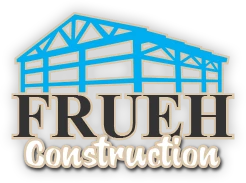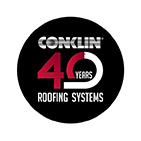
Are you a barn owner looking to protect the structure and integrity of your building? A well-built structure is an important feature to consider for all types of barns. At Frueh Construction, we offer adaptable and durable construction in Lakota, North Dakota. However, our pole barn building services stand out to our clients for a reason. In this post, we’ll define pole barns, discuss their merits, examine their construction, and discuss the elements that make them durable. If you would like our team to discuss further details, don’t hesitate to call us now at 701-693-5765.
What is a pole barn?

Pole barns are built using vertical poles or posts buried in the ground to support the roof and walls. Pole barns‘ main construction is these poles. Pole barns are flexible and used in agriculture, storage, workshops, and homes.
Why pole barn?
- Cost-effective: Pole barns are cost-effective to build. Pole barns are appealing to individuals seeking efficient and cost-effective constructions since they use less materials and labor than standard framing.
- Quick construction: Pole barns are built faster than conventional ways. The simple design and fewer components speed up building, enabling property owners to enjoy their new structure sooner.
- Flexibility: Pole barns are flexible and may be used in many ways. Pole barns are versatile and may be used as agricultural buildings for equipment and animals, machinery storage, workshops, or garages.
- Diversity: Pole barns are adaptable to diverse terrains and soil conditions due to their building approach. Pole barns are ideal for uneven or difficult settings because the vertical poles give stability and flexibility.
The process
- Preparation: Site preparation is the first stage in pole barn construction. Clearing, draining, and designating vertical pole sites are required.
- Vertical Pole Installation: The pole barn’s structure is built by planting vertical poles or posts at intervals. Concrete stabilizes these poles.
- Roof Trusses: After installing vertical poles, roof trusses are added to form the roof structure. Roof support comes from trusses linked to vertical poles.
- Wall Construction: Pole barn walls may be made of metal, wood, or both. Use and aesthetics determine material selection.
Construction Materials for Pole Barns
- Timber: Traditional pole barns have timber poles treated for longevity and rot resistance. Classic and rustic wooden trusses and cladding are also popular.
- Metal: Metal is ideal for pole barn roofing and siding. Metal is ideal for agricultural and storage constructions because of its longevity, weather resistance, and minimal maintenance.
- Concrete: Concrete fixes the vertical poles to the ground to prevent settling. To complete and strengthen the inside, concrete flooring might be installed.
Call us!
Lakota knows pole barns, and Lakota knows Frueh Construction. For many years, we’ve been turning dreams into durable, versatile buildings. Our efficient methods and commitment to quality make us the perfect choice for your next project. Get started today at 701-693-5765!


